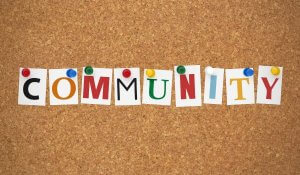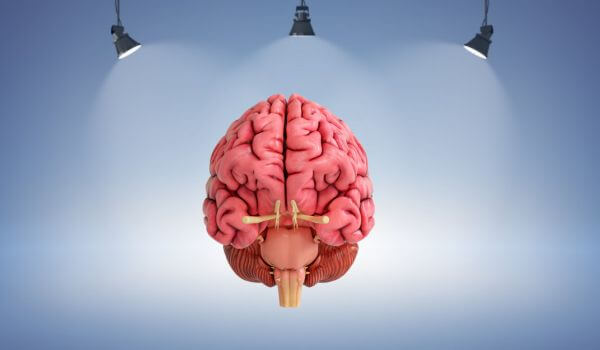
Mental Health Awareness Month falls each May; this year, its central message shines a light on how safe and supportive communities help maintain mental health and wellbeing. Mental health, just like physical health, impacts overall quality of life and requires regular care.
Finding a community isn’t just about being around others; it’s about connection. It’s about feeling accepted, supported, and valued. A strong community can make you feel like you belong and are cared for, which has a powerful effect on mental wellbeing.
Why is community important to mental health?
Humans are social by nature and not meant to always be alone. For people with mental illness, who often deal with loneliness and isolation, having a community can help. Community offers several benefits that support mental health, and three of the most helpful are explained here.
- Belonging: Feeling out of place can be isolating. A community offers a sense of belonging, where someone feels accepted as they are. This doesn’t mean they have to change to fit in.
- Support: Having people to rely on during tough times can make challenges easier to handle. Support from others can provide a sense of safety and care, which may improve a person’s perspective on life.
- Purpose: In a community, people may take on different roles. Some might cook and bring meals to others during tough times. Others are the ones people call when they need someone to listen. These roles provide a sense of purpose by helping others, which can make life feel more meaningful.
How do I find a community?

Interests
People often find it easier to connect with others through shared activities. For example, someone who likes reading could join a book club, while someone interested in soccer might join a local team. There are many options, and participating in activities that match personal interests can help build connections.
Values
What values does a person hold? This might include supporting charities or doing volunteer work. Helping others can be fulfilling and is a way to meet people who share the same interests or care about the same causes. Volunteering is also a simple way to give back and start building a stronger community.
Beliefs
Beliefs can guide a person’s actions and connections. Those who follow a spiritual practice or religion might attend a class, talk, or service to explore it further. Others may feel drawn to a political cause and decide to join a group working toward a shared goal. Being part of something larger can help a person build stronger connections and expand their community.
What is the role of mental health workers and community support workers?

For example, a community worker may connect someone dealing with financial stress and depression to a mental health counselor while also assisting them with finding financial aid or housing. This approach ensures both mental and practical needs are addressed.
Community support workers often help during crises like homelessness or domestic violence. They work with mental health professionals to offer immediate help and connect people to the care they need. For example, a community worker trained in crisis intervention might assist a mental health team in calming someone in distress and setting up their ongoing support.
Collaboration makes prevention possible. Mental health workers can teach community support workers to spot early signs of mental health issues. In turn, community support workers can share details about the social challenges their clients face. This teamwork helps individuals get help early and lowers the chances of a crisis happening.
Community centers in both rural and urban areas offer free or low-cost help for people dealing with unemployment, housing problems, or food insecurity. These programs provide support to prevent bigger issues, like worsening mental health. They also help connect people to mental health resources, such as therapists, counselors, or group therapy programs.
The role of community services

Housing support helps improve mental health. Homeless individuals are more likely to develop mental illnesses. Programs like temporary shelters and affordable housing give people a stable place to live, which helps them focus on their mental health needs.
Many community services make access to healthcare easier. These programs connect people to mental health professionals or provide affordable options like free or low-cost counseling, group therapy, and mental health assessments. They also help individuals navigate government-subsidized healthcare programs to ensure they can get the mental health support they need.
Social isolation can harm mental health, leading to loneliness, depression, and anxiety. Community services address this issue by promoting social inclusion through support groups, activities, and outreach programs. For example, a community worker might set up groups for people recovering from mental illness or addiction. These spaces allow individuals to share experiences and build connections.
Financial stress can lead to mental health problems. Services that offer job training, help finding work, and access to education can improve financial stability and mental well-being. Having a job gives people purpose, confidence, and independence.
Finding a community looks different for everyone, and there’s no single right way to do it. For those who haven’t found one yet, it’s worth continuing to look. Whether it’s a large group or just a few close connections, having people to share experiences with can support mental health. At the same time, being part of someone else’s community can make a difference in their life.
FAQs
How does a lack of community affect mental health?
Individuals with a negative sense of community are more likely to experience symptoms of depression, anxiety, and stress compared to those with a positive sense of community.
How does a lack of socializing affect the brain?
Prolonged loneliness and social isolation increase cortisol levels and impact brain health by impairing cognitive abilities like decision-making and problem-solving.
Who suffers more from loneliness?
Loneliness is a common experience for many Americans, affecting as many as one in three people. Younger adults aged 18-34 are the most affected. 30% report feeling lonely daily or several times a week. Single adults are almost twice as likely as married individuals to feel lonely on a weekly basis over the past year, with 39% of singles compared to 22% of married adults reporting these feelings.
How does community help with mental health?
Being part of a community helps individuals build resilience, which can lower stress, ease anxiety, and reduce the risk of depression.

















